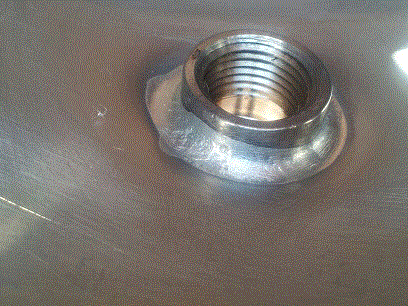allclene
Beer, What a beautiful thing
Ok, I'm a believer. I recieved my flux in the mail today
and I attempted to solder the joint again. I've noticed
with the new flux it etches the stainless even before I
get heat on it (it was bubbling away). The solder
flowed nicely and its a good mechanical bond. So yes
I will eat my words people and choke them down
with a beer! It's good to have a challenge every now
and then I think. Thanks to everyone who set this
stainless ordeal straight.
and I attempted to solder the joint again. I've noticed
with the new flux it etches the stainless even before I
get heat on it (it was bubbling away). The solder
flowed nicely and its a good mechanical bond. So yes
I will eat my words people and choke them down
with a beer! It's good to have a challenge every now
and then I think. Thanks to everyone who set this
stainless ordeal straight.








